Heroin use is extremely dangerous. Using heroin even once can be fatal. The use of this drug can also quickly lead to repeated heroin abuse and addiction.
The clinical term for heroin addiction is heroin use disorder. Heroin use disorder can affect individuals of all ages and genders, including adult women and adolescent girls. Thankfully, heroin use disorder is a treatable condition.
Timberline Knolls Residential Treatment Center offers individualized heroin addiction treatment for girls and women. Our experienced professionals can help you achieve successful long-term recovery from heroin use disorder.
Common Signs & Symptoms of Heroin Addiction
Girls or women who exhibit the following signs may be struggling with heroin addiction:
- Dramatic weight loss
- Gaunt or drawn appearance
- Wearing long sleeves and long pants, even in hot weather (to hide injection marks)
- Wearing loose or baggy clothing (to hide weight loss)
- Withdrawing from family and friends
- Lying or being secretive about their whereabouts or activities
Girls or women may also experience the following symptoms of heroin use:
- Constipation
- Itchiness
- Dry mouth
- Feeling of heaviness in arms and legs
- Extreme drowsiness
- Slowed heart rate
- Shallow breathing
Heroin use can be deadly. Any woman or girl who shows the signs and symptoms of heroin use may be in extreme danger, and they should consult with a qualified healthcare provider immediately. When women and girls receive effective heroin addiction treatment, they can achieve improved health and long-term recovery.
Heroin Use Statistics
The following heroin use statistics were reported by the U.S. Centers for Disease Control and Prevention (CDC):
- About 800,000 Americans engaged in heroin use in 2018.
- From 1999-2018, heroin use was responsible for more than 115,000 deaths in the United States.
- In 2018, more than 14,000 people in the U.S. died from heroin overdose.
- From 1999-2008, the annual number of deaths related to heroin use increased by more than 700%.
Effects of Heroin Use
There is no such thing as safe heroin use. Every time a woman or girl uses heroin, she risks significant harm, including death.
Girls and women who do not get appropriate heroin addiction treatment can experience many negative effects of heroin use, such as the following:
- Heroin use will undermine your ability to do well in school or at work. This can lead to job loss, unemployment, and financial difficulties.
- Physical health effects of heroin use include bacterial infections, sexual dysfunction, and damage to the liver, kidneys, and lungs.
- Heroin use that involves syringes can put you at risk for hepatitis, HIV/AIDS, and other bloodborne diseases.
- Heroin abuse can lead to unsafe behaviors such as unprotected sex, which can further increase your risk for certain diseases.
- Heroin addiction has been linked to the onset or worsening of certain mental health disorders.
- The National Institute on Drug Abuse (NIDA) reports that women may have a higher risk for death from heroin overdose than men do.
Getting heroin addiction treatment is the best way to protect yourself from the effects of heroin use. When you choose an effective heroin addiction treatment center, you limit your risk for continued harm, and you can begin to repair any damage you’ve already experienced.
What Happens During Heroin Withdrawal?
One of the reasons why heroin addiction is so difficult to overcome is the intensity of heroin withdrawal.
When you develop heroin addiction, your body adapts to the presence of this drug. When you try to end your heroin use, or when you can’t acquire heroin, you may experience many painful heroin withdrawal symptoms, such as:
- Watery eyes and runny nose
- Extreme sweating
- Chills
- Nausea, vomiting, and diarrhea
- Pain in your muscles and bones
- Severe abdominal cramps
- Agitation and irritability
When you receive care at our heroin addiction treatment center, we can help you get through withdrawal safely and with minimal discomfort. Timberline Knolls Residential Treatment Center offers ambulatory, nonmedical detoxification, or detox.
During detox for heroin withdrawal, you will be under the care of a team of experts, including doctors and nurses. Detox can be an important step on your path toward long-term recovery from heroin addiction.
Levels of Care for Heroin Addiction
Timberline Knolls Residential Treatment Center provides two levels of heroin addiction treatment. Our residential program accepts adolescent girls ages 12-17 and adult women age 18 and older. Our partial hospitalization program, or PHP, is for adult women.
Here are brief descriptions of heroin use disorder treatment at these levels:
- When you take part in residential heroin addiction treatment, you benefit from round-the-clock care, a trauma-informed approach to treatment, and an individualized heroin addiction treatment plan that reflects your unique needs and goals.
- When you receive treatment for heroin abuse at the PHP level, you take part in full days of service during each treatment day. In the evenings, and on days when heroin addiction treatment sessions are not scheduled, you may return home, or you can stay in one of our on-campus residences.
To learn more about our levels of heroin use disorder treatment, please contact us at your convenience. A member of our team is available 24/7 to answer all your questions.
What Happens During Heroin Addiction Treatment?
We understand that heroin use impacts different people in different ways, and we’re committed to providing the heroin addiction treatment that best fits your unique needs.
Depending on what’s best for you, your individualized heroin abuse treatment plan at Timberline Knolls Residential Treatment Center may include:
- 12-Step education and support
- Cognitive behavioral therapy (CBT)
- Motivational interviewing
- Dialectical behavior therapy (DBT)
- Individual, group, and family sessions
- Art, dance/movement, and other experiential therapies
What Can I Do If I Have a Relapse?
During treatment for heroin addiction, we’ll help you develop skills to prevent relapse. Certain experiences can threaten to push you back into heroin use. These are known as triggers. Preventing heroin relapse is a matter of learning to respond to triggers in a healthy manner.
If you do relapse into heroin use, the skills you learned at Timberline Knolls Residential Treatment Center can help you prevent this temporary setback from causing long-term harm.
In the aftermath of relapse, sources of help may include focusing on the principles of the 12-Step recovery model, connecting with our national alumnae network, and returning for additional heroin addiction treatment.
As you will discover when you receive heroin use disorder treatment, there is no shame in asking for additional help. Getting the support you need is a sign of strength and demonstrates your commitment to achieving long-term recovery from heroin addiction.
This content was written on behalf of and reviewed by the clinical staff at Timberline Knolls Residential Treatment Center.
Inhalants are chemicals that can be found in certain household or workplace products and emit vapors or fumes, which can then be inhaled to produce a quick, often disorienting high.
Sometimes referred to as huffing, sniffing, or bagging, inhalant abuse can cause mind-altering effects because of the fact that aerosols, gases, and volatile solvents act as depressants to the central nervous system.
Chronic inhalant use can result in inhalant addiction and can produce irreversible side effects. As The Cleveland Clinic notes, inhalant abuse is most common in adolescents, but can occur in small children and can continue into adulthood.
What Are Some Common Signs & Symptoms of Inhalant Addiction?
With more than 1,000 commonly used products falling into four general categories — volatile solvents, aerosols, gases, and nitrites — the signs of inhalant use can vary. Generally speaking, though, some of the more common signs and symptoms that a woman or girl may experience include:
- Slurred speech
- Dizziness
- Drowsiness
- Glassy or watery eyes
- Vomiting
- Headaches
- Runny nose
- Chemical odors
- Poor hygiene
- Decrease in appetite
- Irritability
- Confusion
- Trouble concentrating
- Paranoia
What Are the Causes & Risk Factors of Inhalant Addiction?
Inhalants are inexpensive, easy to acquire, and legal, so those factors make them an appealing option for young women or girls looking for a quick high.
There are more specific genetic and environmental risk factors that can make someone more prone to inhalant addiction, however. These include:
- Genetic: Family history of substance use disorders, personal history of antisocial or impulsive behaviors
- Environmental: History of physical or sexual abuse, high level of family conflict, low income, living in rural areas or areas with high unemployment rates
What Is the Prevalence of Inhalant Addiction?
Most research about inhalants looks at the prevalence of inhalant use among adolescents and young adults, as they are the most common users.
- According to a National Institute on Drug Abuse (NIDA) study from 2018, 8.7% of 8th graders said they had engaged in inhalant use in their lifetime, while 4.6% said they’d done so within the past year.
- The NIDA also found that 21.7 million Americans age 12 and older have used inhalants at least once in their lives.
- Some studies have indicated that men are more likely to abuse inhalants than women. But according to the Substance Abuse and Mental Health Services Administration (SAMHSA), in 2015 adolescent girls reported a higher level of inhalant use (3.2%) than adolescent males (2.3%).
Why Should I Seek Inhalant Addiction Treatment?
When breathed in through the nose or mouth, inhalants quickly are absorbed into the bloodstream. That means that instead of having their intended effect of producing a temporary high, inhalants can cause some significant damage and have potentially fatal consequences without proper treatment.
Some of the more common negative effects of inhalant use include:
- Brain damage
- Liver damage
- Kidney failure
- Respiratory distress
- Blindness
- Intestinal inflammation
- Ulcers
- Hallucinations
- Cardiac arrest
What Does Inhalant Withdrawal Look Like?
For any woman or girl who is struggling with inhalant use and decides to abruptly stop using these substances, there can be painful consequences. Your body may become dependent on inhalants over time, and the result of cutting them off can cause significant psychological and physical pain.
Some common inhalant withdrawal symptoms include:
- Convulsions
- Cramps and chills
- Nausea
- Sweating
- Tremors
- Psychosis
- Panic attacks
- Agitation
Timberline Knolls Residential Treatment Center can help you through the withdrawal process in a safe environment with our ambulatory, nonmedical detoxification services for inhalant addiction. Once you’re stable, you’ll be able to receive therapeutic treatment during detox, helping you get an edge on the road to recovery.
How Can I Choose the Right Inhalant Addiction Treatment?
Inhalant use is particularly dangerous because of the risk for dire consequences even before inhalant addiction can develop. Otherwise healthy individuals can suffer sudden sniffing death when inhaling solvents, and all it takes is one wrong move.
That potential for fatal consequences makes it extremely important to seek inhalant use treatment, and making that decision can quite literally save your life.
Timberline Knolls Residential Treatment Center understands that there is no one-size-fits-all inhalant addiction treatment. We believe that every woman or girl who has struggled with inhalant use is on a unique journey toward recovery, and we’ll treat you as an individual in every aspect of your care.
Licensed therapists and other addiction specialists lead both of our levels of care for inhalant addiction. Depending on your needs, you’ll participate in either our residential program or partial hospitalization program (PHP).
Residential care lets women and girls leave the worries of day-to-day routines behind to focus solely on recovery. At the residential level, you’ll engage in therapeutic programming and stay in one of our on-campus lodges. For women participating in PHP, you’ll take part in the same evidence-based modalities as our residents, but have the option to return home when treatment is not in session.
What Is the Inhalant Addiction Treatment Experience Like?
You’ll work with a team of experts who have your best interests in mind. Our staff will develop an inhalant addiction treatment plan that takes into account your unique needs and caters to your strengths.
Despite the focus on individualized care at our treatment center, we still have common elements to our programming, many of which bring together other women and girls who have experienced similar struggles. These include:
- Medication management
- Individual therapy
- Group therapy
- Experiential therapy
- Family therapy
We focus on community at Timberline Knolls Residential Treatment Center, both during your time with us and long after you complete treatment. Our detailed discharge plan will contain community resources and information about inhalant addiction support groups that can help prevent problems from reoccurring down the road.
You’ll also have access to our passionate alumnae community, where you can reconnect with those who shared your experiences and celebrate successes along your journey.
This content was reviewed and approved by the clinical staff at Timberline Knolls Residential Treatment Center.







